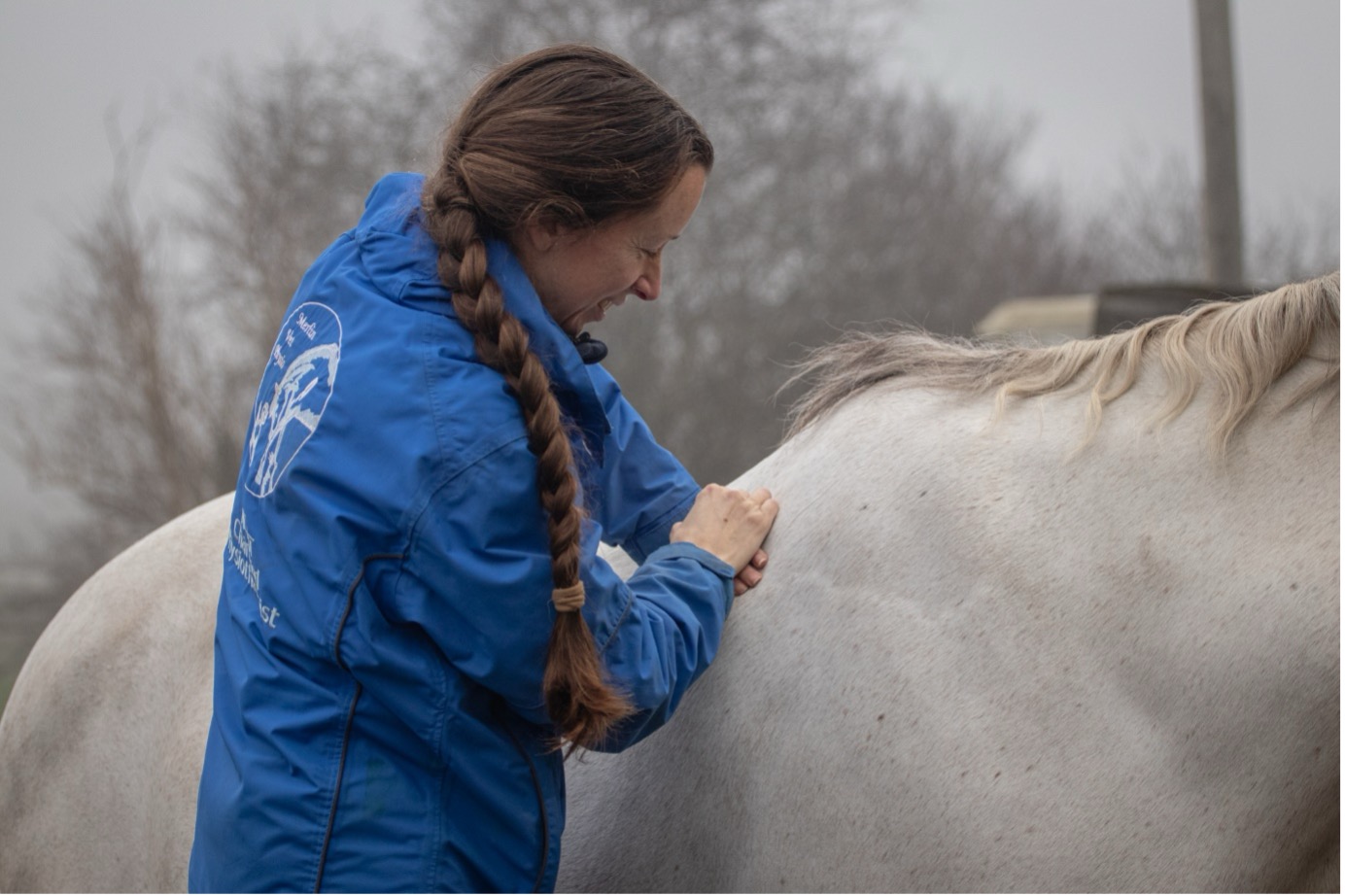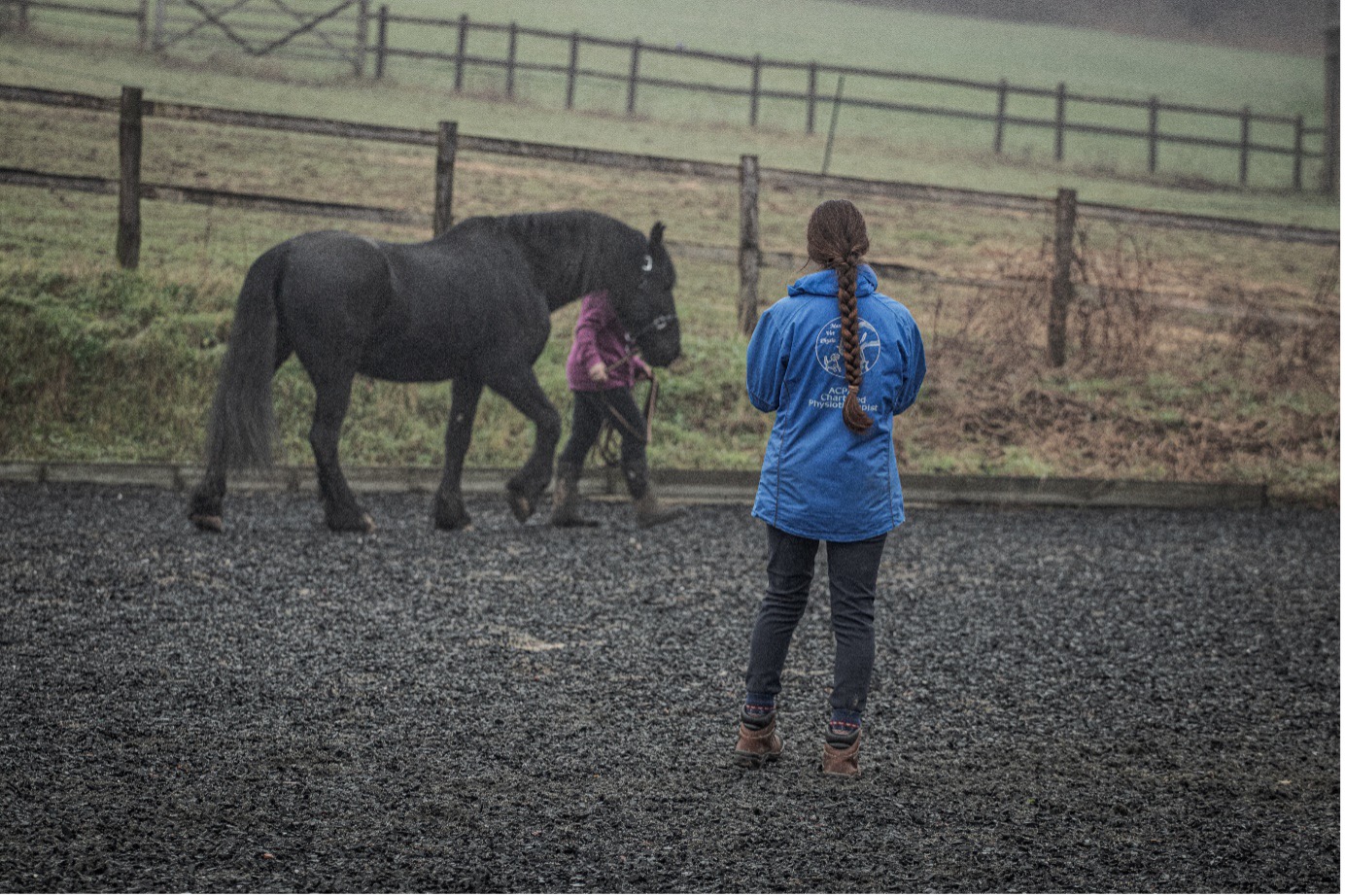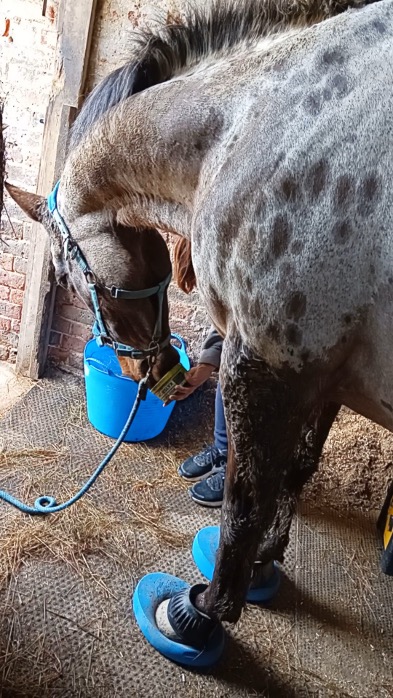
Creative Ways to Get Overweight Horses Moving — No Riding Required
Ciara is a dedicated Veterinary Physiotherapist with a lifelong passion for animals, particularly horses. After achieving a BSc (Hons) in Physiotherapy in 2010, she gained invaluable experience in the NHS, specialising in musculoskeletal physiotherapy before completing a postgraduate Diploma in Veterinary Physiotherapy at the University of Liverpool. Ciara now combines her work with animals with a part-time NHS role. A keen equestrian since the age of 10, she has enjoyed riding experiences across the world and has a special interest in Western riding and equine behaviour. Ciara also has a love for wildlife and shares her home with her young family and two cats.
If your horse is struggling with lameness and needs to lose weight, it can feel like an impossible balancing act. You want to help them move and shift those extra pounds—but not at the expense of making things worse. The good news? With consistency, creativity, and careful planning, you can make progress.
Here are my top tips to support your horse through this journey.

Start with a Log
First things first—track everything. Keep a dedicated equine journal to monitor:
- Lameness grade
- Pain behaviours
- Weight (using a weigh tape fortnightly)
- Changes in turnout, feed, routine, environment, exercise level or type
- Even seasonal changes
Having everything in one place helps you spot patterns, track progress, and plan ahead. You’ll soon learn what really helps your horse and what sets them back.
Find Their Baseline
Your horse’s baseline is the level of movement they can comfortably manage without worsening their lameness. It might be:
- 10-minute in-hand walks
- Turnout only, no ridden work
- A gentle 30-minute hack
- A 15-minute schooling session
Wherever their baseline lies, stick to it consistently for two weeks. This gives any irritated tissues time to settle, while helping you gauge their comfort level.


The 20% Rule
After two weeks at baseline, try increasing exercise gradually by 20% every two weeks.
Let’s say your horse is comfortably walking for 10 minutes a day. After two weeks, increase to 12 minutes. Two weeks after that, up to 14. The idea is to build tissue tolerance and cardiovascular fitness slowly and consistently, without triggering flare-ups.
Avoid rest days during this low-level work; daily, gentle movement is key. If your horse does flare up, don’t panic, just return to the previous level. Don’t wipe the slate clean and start again unless advised by your vet.
What Kind of Exercise?
Turnout – Track Style
Ideally, we want to encourage turnout that encourages movement. Track systems are brilliant, but if you don’t have the set-up, don’t worry, you can make small changes which make a big difference.
Try sectioning the field with electric fencing in a loop or figure-eight. Spread out the essentials - water, hay, shelter, roll area - to encourage more walking between spots.
Get creative with enrichment too - try stapling curry combs to fence posts for scratching at different heights. You’ll be amazed how much extra movement this encourages.
Enrichment and Brain Work
Stabling or limited turnout? You can still stimulate your horse’s mind and body.
- Place novel, safe items in the stable or field for them to investigate. Think cardboard boxes, yoga mats, even teddy bears!
- Offer herbal tea buckets for them to explore with their nose.
- Avoid big play balls—these can cause injury, especially in horses with lameness.
Remember, thinking uses energy too. Cognitive tasks can support weight loss without intense physical effort.
Try This: Scent-Work & Clicker Training
Did you know horses have around 25–30 million scent receptors compared to our 5 million? Scent-work is a brilliant low-impact way to encourage movement, stimulate the brain, and burn calories.
Or try clicker training using low-calorie treats. This science-backed method uses positive reinforcement, not pressure-release. You can teach new tricks, introduce target training, or even refine physiotherapist-recommended movements, all while strengthening your bond.
In-Hand Work: A Hidden Gem
In-hand lateral work is fantastic for developing postural muscles, especially if ridden work isn’t an option.
Start with:
- Shoulder-in
- Side-steps
- Back-ups
- Small amounts of collected movement (like passage)
Encourage your horse to work with a low head carriage and lifted ribcage, not hollow and tense.
The Game-Changer: In-Hand Hacking
Here’s a mindset shift: what if you boxed your horse not for a ride, but for a scenic walk?
In-hand hacks over varied terrain are a brilliant way to:
- Build muscle and strength
- Manage weight
- Avoid strain on sore limbs
- Explore somewhere new
Walking actually engages more muscles than you might think—especially on hills or uneven ground.
Final Thoughts
Helping a horse through lameness and weight loss is a slow and steady process—but with the right plan, it’s absolutely possible. Your horse’s comfort, long-term soundness, and mental wellbeing are worth every step.
So, grab that journal, start tracking, and remember—consistency is key.
Need support with your horse’s diet or body condition management? The team at SPILLERS are here to help. Speak to one of our friendly nutritionist specialists or explore the SPILLERS Slimmers’ Club for free resources, expert advice, and a supportive community of horse owners on the same journey.
